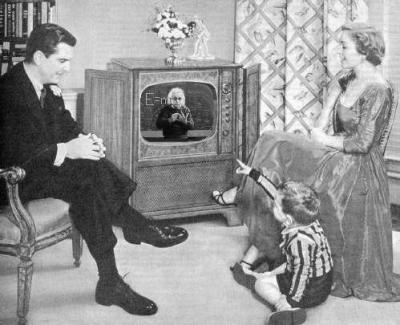Part Four - New Solutions to Old Problems
Tracy Smallwood makes model trucks and cars from corndog sticks and paint. He sells them at craft bazaars to help out needy kids and at-risk youth. He realizes that the root cause of crime in our country is poverty. He knows this because he is a prison inmate.
“People don’t know the good that people do in prison,” says Smallwood. “There are people that belong in prison, but there are people doing good.” His fellow inmates at the Kentucky State Penitentiary agree.
Leo Spurling, like the rest of the inmates at Kentucky’s lone maximum security prison, doesn’t have to work while in prison, but he does to raise money to keep people out of prison. “Violence, drugs, you name it; I was in it. I was as bad as a human being could get. I gave up on life because I didn’t have hope. I thought my life was a waste because I didn’t realize my potential.”
Spurling decided to change things, and with the help of a prison chaplain, organized the Children’s Fund Project. All the funds come from the inmates themselves. They make and sell arts and crafts, collect donations from other inmates, and dig through the prison’s garbage for aluminum to sell for roughly 40 cents a pound.
One day with sifting through the day’s garbage an inmate walked by Spurling and said, “That’s got to be humiliating.” Spurling could only reply, “Why? We’re doing it for the kids, man. How can that be humiliating?”
Innovation is probably one of the most important strategies we can use to combat poverty. It can come from anywhere, but usually starts at the grassroots level. By the time it reaches the public policy stage, it’s nearly obsolete because dozens of newer more efficient ways have been created. The Children’s Fund Project raised $4,000 last Christmas for local charities that work with youth. While that might not seem like an overwhelming number, just imagine if every prison around the country did the same. And that each community that ran each prison matched that amount. And every state matched that new amount. You get the idea.
The federal government would do well to encourage non-profit organizations to try new ways to combat poverty by reaching into the old pork-barrel and pouring funds into new federal grants. (You hear that Bush? Try vetoing a special interest spending bill one these days.)
And businesses could be further encouraged to fight poverty in their own communities through tax breaks or other financial incentives. A stronger economy in the local community bolsters businesses in a variety of ways. Lower poverty rates mean a greater number of consumers looking to spend their capital. Also, increased consumption rates have the potential to turn previous run-down communities into attractive, magnet neighborhoods. This is how we convince disciples of Adam Smith to join the fray; by proving that it is in their best interest to help eradicate poverty.
My point is not to come up with innovative ways right this instance, and that shouldn’t be the goal of the federal government either. Instead, it should encourage its citizens as often as possible to come up with new solutions to the old problem of poverty. If we tightened the purse strings, and made sure tax money went where it mattered, we'd be well on our way.
Saturday, November 20, 2004
Poverty, meet your Nemesis
Posted by
jonny
at
11:59 AM
![]()
Subscribe to:
Post Comments (Atom)




No comments:
Post a Comment